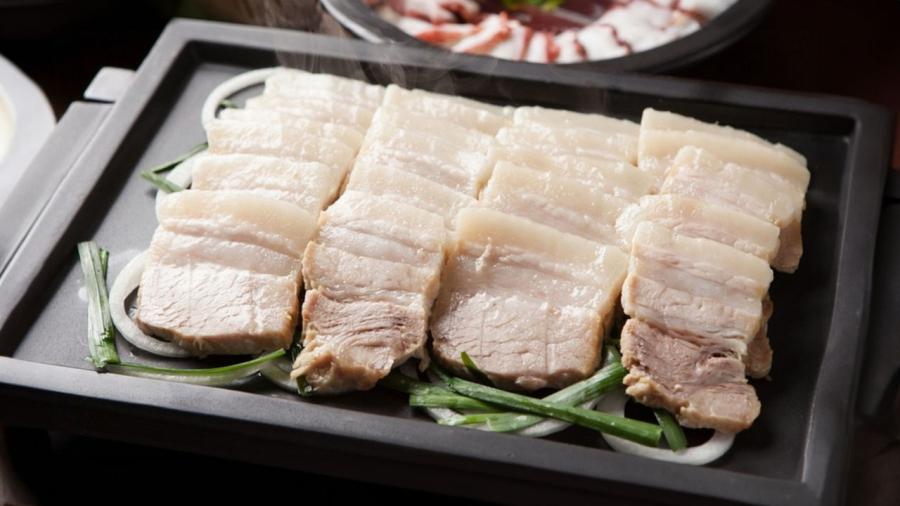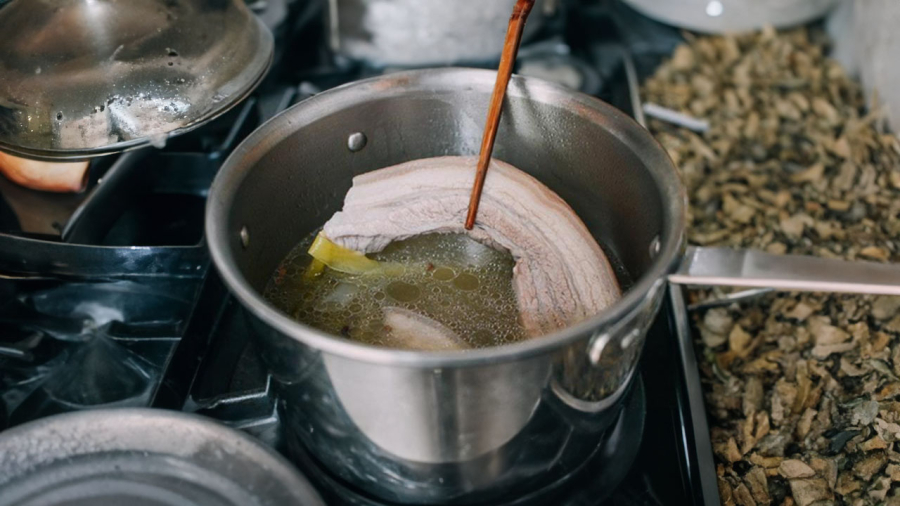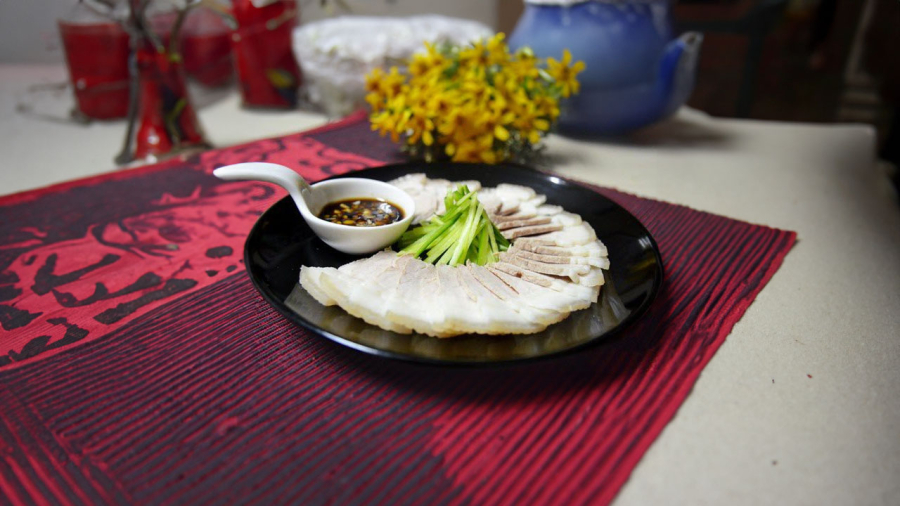Boiled meat is a simple, pure, and appetizing protein-rich dish. To make delicious boiled meat, ensure it is thoroughly cooked yet tender, neither raw nor overcooked, and moist with sweet juices when bitten into. The key to achieving this lies in mastering the proper boiling technique. A common debate revolves around whether to place the meat in a pot of cold water and then heat it up or to use already boiling water.

For tender and tasty meat, boil it in hot water, but for sweet broth, start with cold water.
When it comes to boiling meat, we usually have two objectives: to use the boiled meat as the main dish and then utilize the broth for soup. Essentially, the focus is on the boiled meat itself.
To ensure the boiled meat is tender, moist, and full of sweet juices when sliced, regardless of whether it’s pork, chicken, duck, or beef, follow these steps: Clean the meat thoroughly, heat a pot of water to a boil, add aromatic spices like ginger and onion, and then gently lower the meat into the hot water. The meat will contract upon contact with the hot water, releasing less of its sweet juices. Allow the meat and water to come to a boil again, then reduce the heat to a gentle simmer. Avoid a vigorous boil, as this will dry out the meat, causing the protein to break down and the meat fibers to become prominent. A gentle simmer allows the meat to cook slowly without affecting its structure, resulting in tender, sweet, and moist meat when removed from the pot.

On the other hand, boiling meat in vigorously boiling water will dry it out, causing the meat fibers to become prominent and the connective tissue between the protein strands to dissolve into the water. As a result, the meat will appear dry and tough when sliced, and its sweetness will be diminished.
As the meat nears doneness, add more spices to enhance the flavor, and then remove the meat from the pot.
If your primary goal is to make a sweet broth for soup, you can start with cold water, as this will result in a sweeter broth due to the increased amount of protein dissolved in the water. However, this approach is less commonly used.

Note: The key to ensuring sweet and moist meat lies in bringing the water to a boil before adding the meat and then simmering it over low heat.
To ensure the boiled meat retains a beautiful white color and doesn’t turn dark or gray, consider these two points: Adding a few drops of vinegar to the boiling water will not only enhance the aroma but also prevent the meat from turning dark. Additionally, ensure there is just enough water in the pot to submerge the meat, as this will result in a more even color without any dark spots on the lean meat or skin.
For firmer, crisper meat that doesn’t turn soggy after boiling: Immediately after boiling, place the meat in the freezer for about 10 minutes or immerse it in clean ice water. This sudden change in temperature will cause the meat to contract rapidly, preventing the skin from softening. As a result, the skin will be crispier when eaten. This method of immersing the freshly boiled meat in ice water also helps to maintain its pinkish-white color. However, ensure that the freezer and ice water are clean, and if you use this method, consume the meat promptly to minimize the risk of bacterial contamination.



































